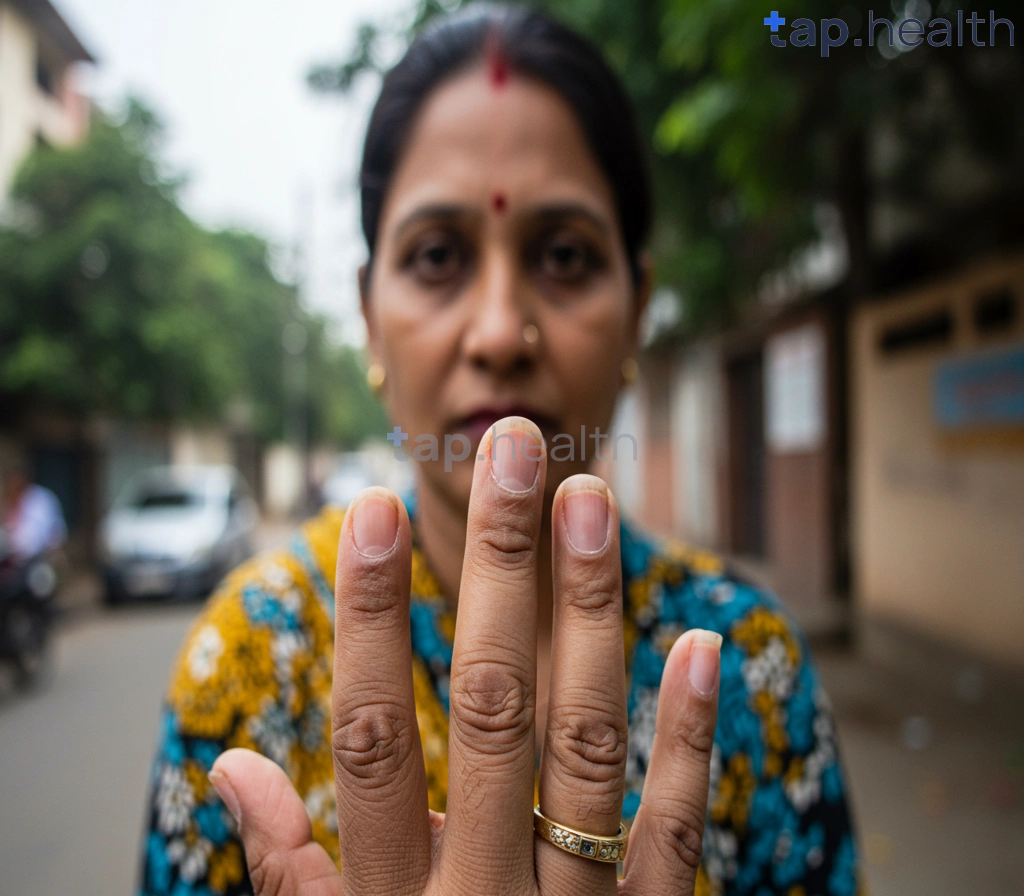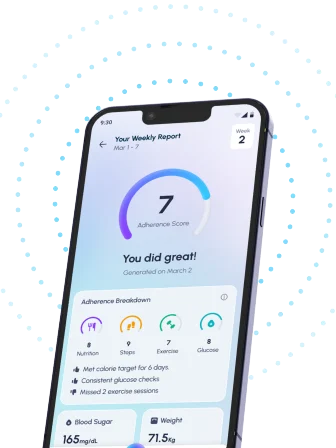Table of Contents
- Diabetes & Joint Pain: When to See a Doctor
- Is Your Joint Pain Related to Your Diabetes?
- Understanding the Link Between Diabetes and Joint Problems
- Managing Diabetes-Related Joint Pain: A Practical Guide
- Diabetes and Arthritis: Recognizing the Symptoms and Seeking Help
- Frequently Asked Questions
- References
Living with diabetes can present many challenges, and one often overlooked complication is joint pain. Many people experience aches and stiffness, but when does that discomfort cross the line into something that needs immediate medical attention? This blog post tackles the crucial question of Diabetes and Joint Pain: Understanding When Medical Attention Is Needed. We’ll explore the connection between these two conditions, examine common symptoms, and help you determine when it’s time to seek professional help. Don’t suffer in silence – understanding your symptoms is the first step towards better management and improved quality of life.
Diabetes & Joint Pain: When to See a Doctor
Joint pain is a common complaint, but for those with diabetes, it can be a particularly significant concern. The connection between diabetes and joint problems is complex, and understanding when to seek medical attention is crucial, especially within the context of Indian and tropical countries where diabetes prevalence is high. According to the International Diabetes Federation Diabetes Atlas, 61% of people with diabetes are aged between 20-64 years, a significant portion of the working population. This highlights the importance of early intervention and proactive healthcare.
Recognizing Serious Symptoms
Several indicators warrant an immediate visit to a doctor. Persistent, severe joint pain that doesn’t respond to over-the-counter pain relievers is a red flag. Swelling, stiffness, reduced range of motion, and noticeable inflammation in the joints should also prompt a consultation. In tropical climates, additional considerations like increased susceptibility to infections in compromised joints might require more vigilant monitoring. For individuals aged 65+, who comprise 39% of the diabetic population, these symptoms might be even more critical due to age-related factors impacting joint health. This is especially true for pain in specific areas, such as the heel. If you’re experiencing heel pain, it’s crucial to consult a doctor to rule out any diabetes-related complications.
Don’t Delay: Seeking Expert Advice
Don’t underestimate the impact of seemingly minor joint pain. Early diagnosis and management of diabetic-related joint issues can significantly improve quality of life and prevent long-term complications. In India and other tropical regions, access to healthcare can vary, so proactive management is key. Schedule an appointment with your doctor if you experience any persistent joint pain, especially if accompanied by other symptoms, such as unexplained muscle cramps. Remember, early intervention is essential for effective treatment and better long-term health outcomes. Don’t delay – your health is worth it.
Is Your Joint Pain Related to Your Diabetes?
Joint pain is a common complaint, but for individuals with diabetes, it can be a particularly significant concern. The connection between diabetes and joint pain isn’t always straightforward, but understanding the potential links is crucial for effective management and preventing serious complications. Nearly 15% of diabetics experience foot ulcers in their lifetime, highlighting the increased risk of lower limb problems, including joint pain and potentially leading to amputations. This emphasizes the importance of early detection and intervention. The risk of foot ulcers is especially concerning, and you might find our article on Does Diabetes Cause Swollen Feet? Understanding the Connection helpful.
Understanding the Connection
Diabetes can affect the joints in several ways. High blood sugar levels can damage nerves (diabetic neuropathy), causing pain, numbness, and tingling in the hands and feet. This nerve damage can lead to decreased sensation, increasing the risk of injuries that can further exacerbate joint pain. Additionally, diabetes can cause inflammation, contributing to conditions like arthritis, making joint pain more prevalent and severe. In tropical and Indian climates, where certain infectious diseases are more common, these infections can also worsen existing joint issues in diabetic patients. It’s also important to understand the relationship between diabetes and weight, as explored in Understanding the Link Between Diabetes and Obesity.
Recognizing Warning Signs
Persistent joint pain, especially in the feet and hands, should not be ignored, particularly if you have diabetes. Pay close attention to any swelling, stiffness, redness, or warmth around the joints. Changes in sensation, such as numbness or tingling, are also significant warning signs. The risk of foot ulcers is high among people with diabetes, and foot ulcers can cause severe complications, including joint damage and infections. Early diagnosis and treatment are crucial to prevent these severe outcomes.
Seeking Medical Attention
If you are experiencing joint pain alongside your diabetes, it is vital to seek medical attention immediately. Early diagnosis and treatment can help manage pain, prevent further complications, and ultimately improve your quality of life. Consult your doctor or a specialist promptly to discuss your symptoms and receive a proper diagnosis. Remember, proactive management is key to preventing potentially debilitating complications associated with diabetes and joint pain, especially in hot and humid climates prevalent in India and other tropical countries.
Understanding the Link Between Diabetes and Joint Problems
Diabetes significantly increases the risk of developing various joint problems. This isn’t just a coincidence; the underlying mechanisms of the disease contribute directly to joint pain and inflammation. High blood sugar levels, a hallmark of diabetes, damage nerves and blood vessels throughout the body, including those supplying the joints. This nerve damage, or neuropathy, can cause pain, numbness, and tingling in the hands and feet, often manifesting as joint pain. Furthermore, the chronic inflammation associated with diabetes can lead to conditions like osteoarthritis, making joints stiff, swollen, and painful. In India and other tropical countries, where diabetes prevalence is high, understanding this connection is crucial for early intervention and better management of the disease. The interconnectedness of health issues is important to consider; for example, The Link Between Diabetes and Fatty Liver is another crucial area to understand in managing this condition.
The Impact of High Blood Sugar on Joints
The elevated glucose levels in diabetes affect the structure and function of joint cartilage. This damage weakens the cartilage, making it more susceptible to wear and tear, leading to increased joint pain and reduced mobility. Additionally, diabetes can increase the risk of infections, making joint problems even more severe. A concerning statistic highlights this risk: nearly 30% of people with diabetes develop diabetic nephropathy, a kidney disease further complicating joint health due to fluid retention and inflammation. This highlights the interconnectedness of various health issues in individuals with diabetes. Sleep disturbances can also exacerbate the situation, as explained in The Connection Between Diabetes and Sleep Apnea.
Seeking Timely Medical Attention
Experiencing persistent joint pain, swelling, stiffness, or limited mobility alongside your diabetes requires immediate medical attention. Early diagnosis and management are vital in preventing further complications and improving your quality of life. In many Indian and tropical settings, access to specialists may vary, but proactive engagement with your primary care physician is crucial. Don’t delay seeking professional help; early intervention significantly improves treatment outcomes and reduces long-term disability associated with diabetic joint problems. Regular check-ups, careful blood sugar monitoring, and a healthy lifestyle can help mitigate the risk and severity of these complications.
Managing Diabetes-Related Joint Pain: A Practical Guide
Managing diabetes effectively is crucial, especially in hot and humid climates prevalent in many Indian and tropical countries. This is because factors like increased sweating and dehydration can impact blood sugar control and exacerbate existing conditions. One common complication is joint pain, often linked to diabetic neuropathy. Diabetic neuropathy affects a significant portion of the diabetic population (30-50%), causing pain, stiffness, and reduced mobility, impacting daily life significantly.
Understanding the Connection
High blood sugar levels can damage nerves and blood vessels over time, leading to inflammation in the joints. This is why careful blood sugar management is vital. The symptoms can vary, from mild aches to severe, debilitating pain, often affecting the hands, feet, and knees. In tropical regions, the added stress of heat and humidity can intensify these symptoms. Recognising these symptoms early is critical for effective management.
Practical Tips for Relief
Regular exercise, adapted to suit the climate, is crucial. Gentle activities like swimming or yoga can help maintain flexibility and reduce stiffness without overexerting the body in the heat. Maintaining a healthy diet, rich in fruits, vegetables, and lean protein, is equally important for overall health and blood sugar regulation. Staying well-hydrated is especially crucial in tropical climates, as dehydration can worsen nerve pain. Consult your doctor or a qualified diabetologist to discuss pain management strategies, which might include medication or physiotherapy tailored to your specific needs and the regional climate.
Seeking Medical Attention
Don’t ignore persistent joint pain. If your pain is severe, worsening, or interfering with your daily activities, seek immediate medical attention. Prompt diagnosis and management can significantly improve your quality of life. In India and other tropical countries, access to healthcare varies. It’s important to find a doctor experienced in managing diabetes and its complications. Early intervention is key to preventing further damage and improving your overall well-being. For more information on preventing long-term complications, see our guide on How to Prevent Long-Term Complications of Diabetes: Easy Tips. As you age, managing diabetes presents unique challenges. Learn more in our article, Managing Diabetes as You Age: Challenges and Solutions.
Diabetes and Arthritis: Recognizing the Symptoms and Seeking Help
Diabetes significantly increases the risk of developing various health complications, including joint pain and arthritis. This connection is crucial for individuals in Indian and tropical countries, where both diabetes and arthritis are prevalent. Understanding the link between these conditions is essential for timely intervention and improved health outcomes.
Recognizing the Symptoms
Many people with diabetes experience joint pain, stiffness, and inflammation, often mistaken for typical wear and tear. However, the symptoms can be more severe and persistent in those with diabetes. This can manifest as pain in the hands, knees, feet, and ankles. In tropical climates, existing joint conditions might worsen due to higher humidity and increased physical exertion. Early detection is vital. Pay attention to persistent joint pain, swelling, and reduced mobility. Remember, diabetes is linked to a 70% increased risk of sleep apnea, which can exacerbate fatigue and make joint pain more debilitating. Managing your diabetes effectively can help mitigate this risk. For more information on managing a specific type of joint pain, you might find our article on Managing Osteoarthritis with Diet helpful.
Seeking Help
If you experience persistent joint pain alongside your diabetes, seek medical attention promptly. A doctor can properly diagnose the underlying cause and recommend appropriate treatment, which may include medication, physiotherapy, and lifestyle modifications. In India and other tropical countries, access to healthcare can be a challenge, so proactive management is crucial. Don’t delay; early intervention can significantly improve your quality of life and prevent further complications. Regular check-ups with your physician are crucial, especially if you’re experiencing any new or worsening symptoms. Remember, addressing both diabetes and joint pain simultaneously is key for long-term well-being. And if you’re planning any travel, check out our tips on Traveling with Diabetes: Essential Tips for a Safe & Healthy Journey to ensure your health remains a priority.
Frequently Asked Questions on Diabetes Joint Pain
Q1. How does diabetes increase the risk of joint problems?
High blood sugar damages nerves and blood vessels, causing diabetic neuropathy. This leads to pain, numbness, inflammation, and reduced mobility in the joints, especially in the hands and feet. Diabetes also increases susceptibility to infections and conditions like osteoarthritis, worsening joint problems.
Q2. What are the common symptoms of diabetes-related joint pain?
Common symptoms include persistent pain, swelling, stiffness, and reduced range of motion in the joints. These symptoms often occur in the hands and feet.
Q3. When should I seek medical attention for joint pain if I have diabetes?
Seek immediate medical attention if you experience persistent joint pain, swelling, stiffness, or reduced range of motion, particularly if you are an older individual. Early diagnosis is key to preventing serious complications.
Q4. How can I reduce my risk of developing diabetes-related joint problems?
Maintain a healthy lifestyle with regular exercise, a balanced diet, and consistent monitoring of your blood sugar levels. Regular check-ups with your doctor are also essential for early detection and management of diabetes.
Q5. What are the potential long-term consequences of untreated diabetes-related joint problems?
Untreated diabetes-related joint problems can lead to serious complications such as foot ulcers, decreased mobility, and a significant reduction in overall quality of life.
References
- A Practical Guide to Integrated Type 2 Diabetes Care: https://www.hse.ie/eng/services/list/2/primarycare/east-coast-diabetes-service/management-of-type-2-diabetes/diabetes-and-pregnancy/icgp-guide-to-integrated-type-2.pdf
- What is Diabetes: https://www.medschool.lsuhsc.edu/genetics/docs/DIABETES.pdf




